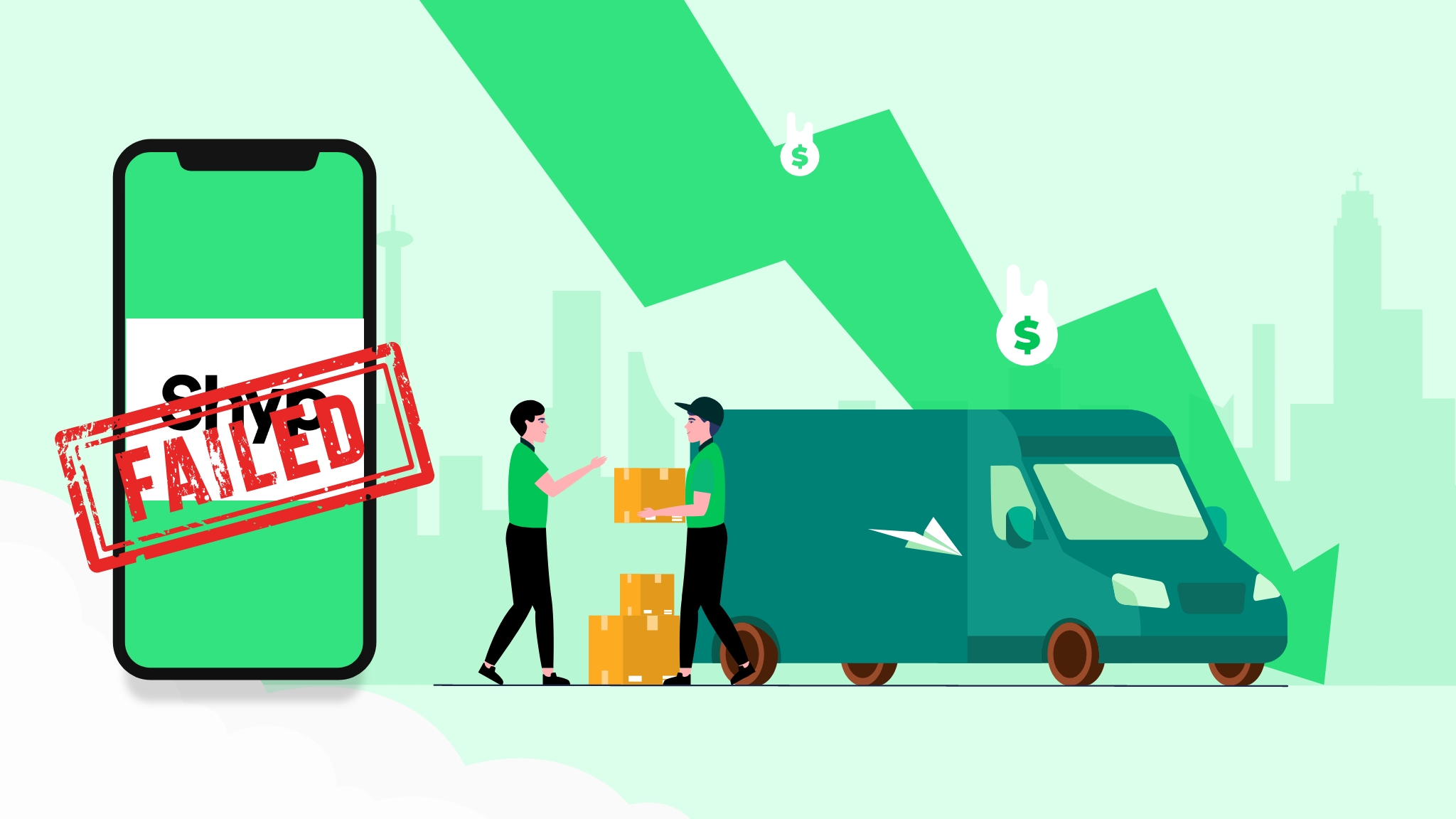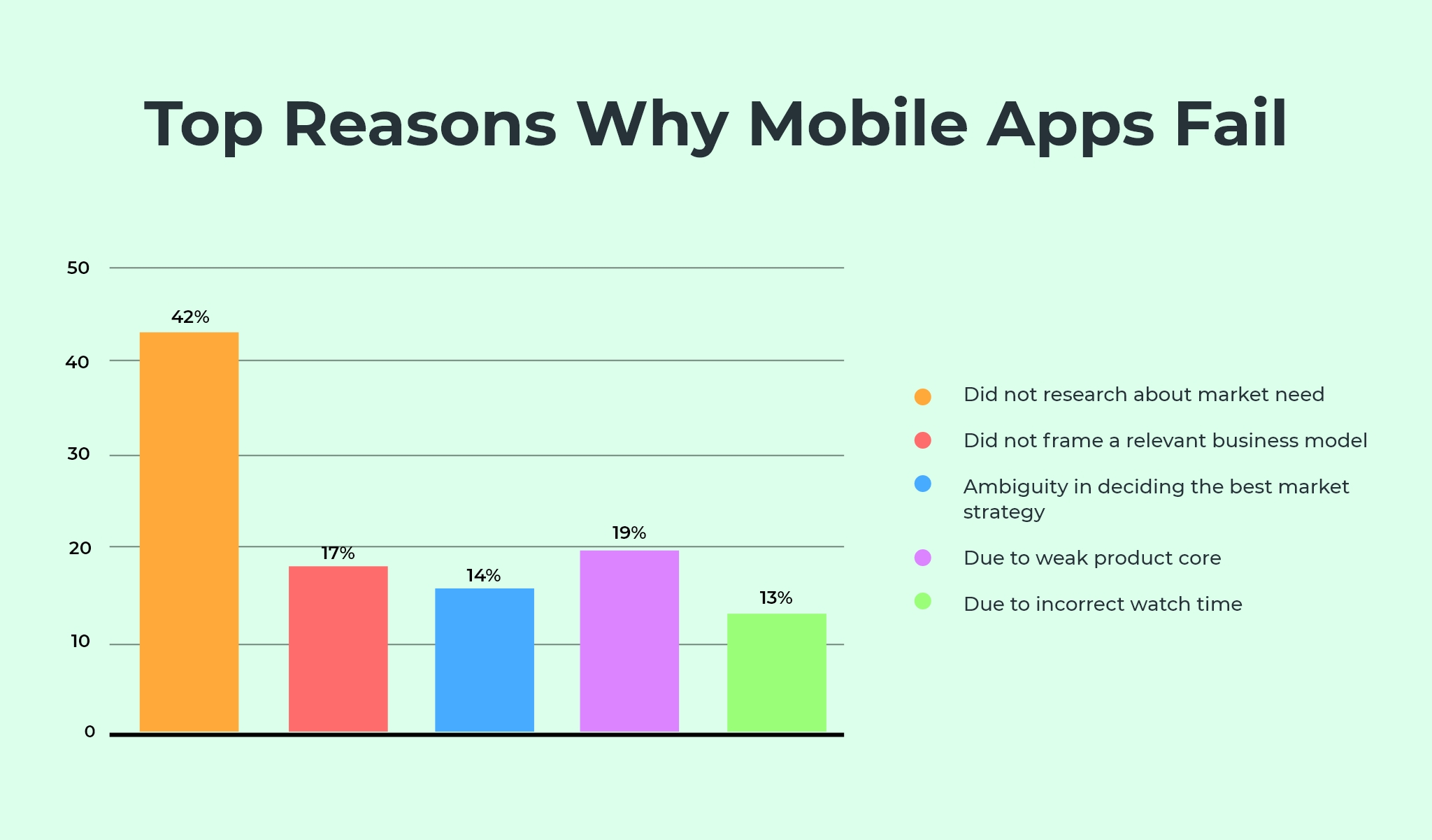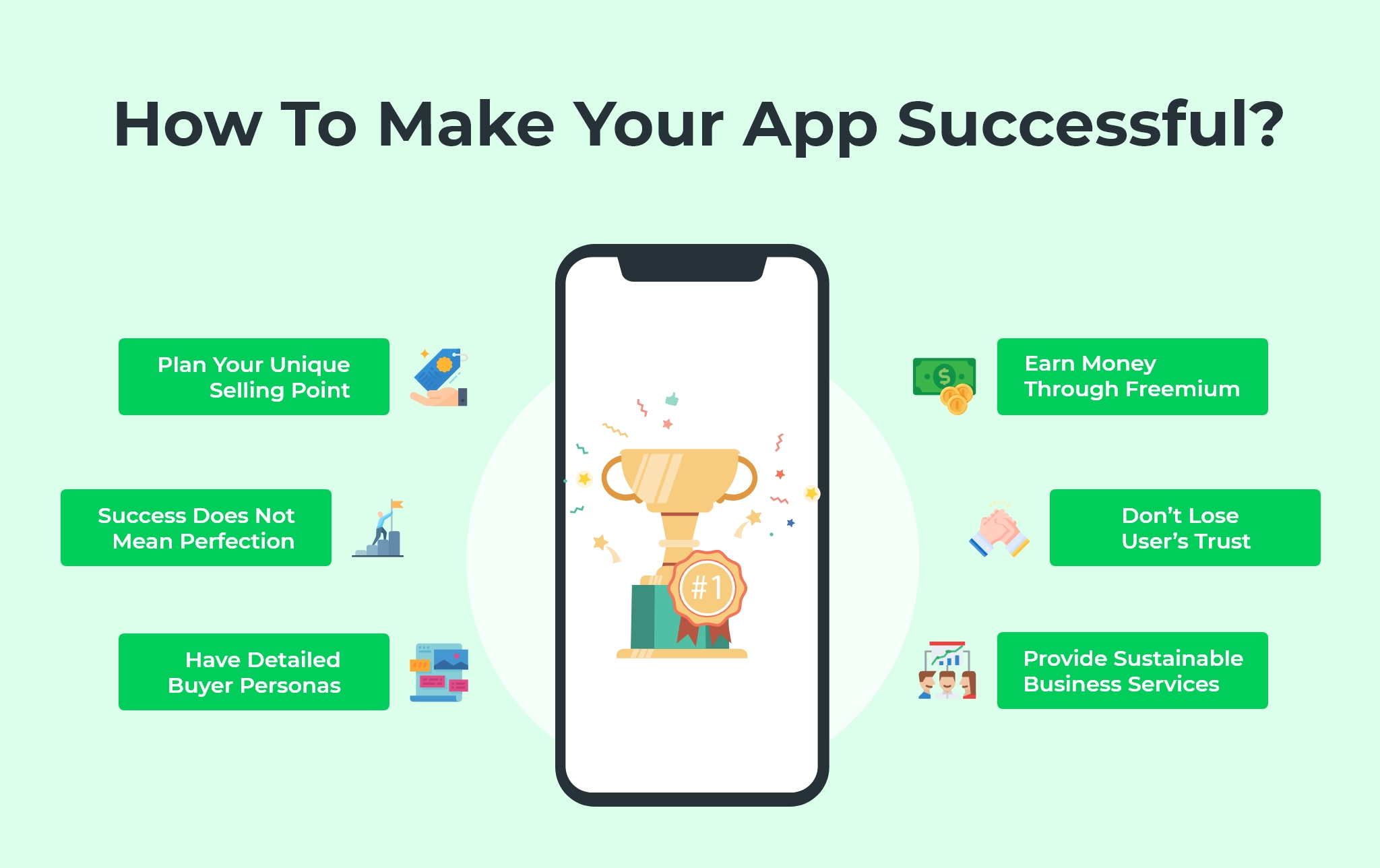Don't miss the chance to work with top 1% of developers.
Sign Up Now and Get FREE CTO-level Consultation.
Confused about your business model?
Request a FREE Business Plan.
Why Shyp App Turned Out To Be A Failure – Mistakes And Lessons
Table of contents

Imagine if you wanted to ship something to the opposite part of the country and you didn’t want to look for a big box, wait in a queue or go to the post office. You wanted someone to pick up the package from your house and deliver it to the desired destination.
The Shyp app made sure you got the convenience of getting items delivered without going anywhere. Their motto was: “We’ll Take It From Here”. The customers had to click a picture of the package, upload it through the app and the delivery agent would come and pick it up. The best thing about this service was they charged only $5 for it.
This on demand shipping business succeeded in California as people started recognising it as Uber For Deliveries. The business then expanded to Chicago and Newyork, where it didn’t do quite well. Subsequently, after 5 years Shyp app failed to function in the marketplace.
In this blog, we will get to know what is a Shyp app, where did it go wrong and things you should keep in mind to make your app a success.
What Is A Shyp App?
The on demand marketplace has become a remuneration. After the rise of Uber, the other on demand service provider has left people asking for more. Shyp wanted to provide convenient on demand shipping services to its users.
Precisely speaking, the Shyp app wanted to give their users the service where they only have to upload a clicked picture of the item to be shipped. After uploading, a delivery agent would come and pick up the package to be shipped.
The package would be taken to the headquarters and after high-end custom-packaging, it will be shipped via FedEx, UPS or other delivery services. But if they planned to deliver such excellent service, how did it lead to the app’s failure? Read further to find out!
Early Success Of Shyp App
Shyp app was launched in San Francisco as a testing platform and it worked out pretty well in that area. People appreciated the idea of on demand shipping and with various cyclists or delivery agents around, the number of couriers also rose.
The app was user friendly and became enticing for its customers. The business began to succeed primarily because it focused on the subject of the delivery chain that was often overlooked by many companies.
Joshua Scott described very smartly that – eBay helped in easy online shopping and PayPal helped in easy online payment. Now, Shyp will not only help in saving money but also in creating markets for small businesses.
SherpaVentures had spent $10 million by the middle of 2014, and only a year later, they were negotiating investments worth about $50 million with Kleiner Perkins Caufield and Byers. As a result, it seemed normal to develop.
After San Francisco, they launched the business in New York, Chicago and Miami where the business was headed in the right direction. The company became well-funded as it totalled $62.1 million and $250 million in valuations.
What Led To The Failure Of The Shyp App?
In 2013, Shyp gained a lot of appreciation for the services it provided from the people in San Francisco. The app operated on an on-demand service model which is undoubtedly trending in the marketplace. The functionality of picking up the packages in 20 minutes, made users love the Shyp app resulting in a raise of $62 million during the operation.

Let’s get into how the Shyp app failed. It overestimated the number of users that would want to ship their packages regularly using the app. Let’s not forget that the users had to pay a flat $5 as shipping charges regardless of the size of the package. After this blunder, they started charging $3 as a packaging fee.
Shipping things is an unusual and frequently intermittent practice, unlike basic utilities like taxi rides and food delivery, which most people now use at least once a week. To compensate for this, Shyp began to recruit small businesses (that ship regularly) to join their shipping movement, even providing volume discounts.
Later in 2018 company’s CEO Kevin Gibbon admitted that instead of planning the right demographic, innovative features and growth tactics, he focused on the engineering and development part. He stated that the Shyp app fell into the trap of growth.
In the case of Shyp, while trying to keep the prices as low as possible for the customers, they overlooked the prices that came with renting the physical warehouses, packaging materials, hiring driver agents, etc. This led to the rise in startup capital.
One of the main things that led to the failure of the Shyp app was its comparison with Uber. The “big daddy” of ridesharing, has a huge war chest that allows it to massively subsidise its consumer goods while also growing.
The downfall of the Shyp app began when it tried to mimic Uber’s strategy. Established companies have the benefit of financial freedom which allows them to explore various product categories. Similarly, Shyp tried to explore the latest product categories without having much financial support.
Shyp gradually shifted its emphasis from individual orders – which were infrequent and unreliable – to partnerships with small companies that delivered products daily, but it was too little, too late. Eventually, the company decided to stop its expansion and keep focusing on its mainland, San Francisco. Hence, the operations in New York, Los Angeles and Chicago shut down.

Opinion On Shyp App Failure
The story of Shyp illustrates the trouble in launching an excellent business model from the development phase to the strategic planning/marketing phase. This applies to all the businesses who are entering and are sure of their success (like Shyp).
Being so caught up with an idea and the technical innovations that can be applied, can hinder a good picture of the demand, what consumers are likely to pay, and therefore the types of targets that can be accomplished. Finally, if the founder is ignoring the advisors, it may lead to a catastrophic failure.
They were doing all they could to adhere to their current priorities and expectations in terms of customer base, areas of service, and the number of workers hired. However, the initial errors were much too large, and the cost of on-demand distribution spiralled out of reach.
Future Of On Demand Business
The on demand market is always evolving, make sure you are always updated with the trends of on demand marketplace of 2021. One of the most appealing aspects of this market is the low fee for any service. It is the most popular yet unprofitable side of the on demand businesses.
It’s clear that, as companies grow into consumers who want something on-demand and at a cheaper price, they must establish a route to sustainability as soon as possible, particularly given the increased competitiveness in all markets.
Investors are still not sure if customers are the magical answer to success in the market. It may be the functionality the app provides or the strategic plan the app owner makes to satisfy the customer’s requirement. Startups are aiming to function successfully, Shyp being one of them.
What Should You Do To Make Your App A Success?
If you are planning to get an app developed like the Shyp app or any other mobile app, there are some things that you must keep in mind to make your app function in the market successfully. These strategies will keep your users satisfied and earn high revenues:

Plan Your Unique Selling Point
Different people may have different reasons for downloading your app but usually, there is a single reason for downloading that overpowers the other reasons. For example, Yik Yak was popular for anonymous texting, Snapchat is famous for timed conversations and filters, etc.
You have given your customers no incentive to keep using your app if you remove the key reason they use it.
Success Does Not Mean Perfection
Unlike Apptunix, various mobile app development companies believe that development is the key to the success of the app. This often leads to over-development and the addition of extra features in the application that are not even used by many users.
After planning what features and the development fundamentals, it is essential that you market your app to get as many users as possible. Rdio and Everpix apps were built with strong development techniques but due to less user base, they failed.
Also, Read – Why Everpix – The World’s Best Cloud-Based Photo Startup Failed?
Have Detailed Buyer Personas
You should have a clear understanding of who are the ideal users of your mobile app. Having a buyer persona demonstrates that you keep information like names, income, location, and other possible data. This will affect the features that you include in your app and the marketing plans you make for your users.
Hailo was very successful in London but it didn’t perform well in New York’s market as they had a different buyer persona. Therefore, these things also affect the functioning of your app in the marketplace.
Earn Money Through Freemium
If you are planning to earn money from your mobile app, the best strategy is to offer them for free to build your user base. After gathering a high number of users on your app, it will be easy to convert them into paid subscribers.
To listen to music on the Rdio app, users had to pay to access the app whereas Spotify allows its users to access the app without paying any amount. Paid subscribers of Spotify have the privilege of listening to music ad-free and downloading songs.
Due to this strategic planning, Spotify survived, Rdio didn’t.
Don’t Lose User’s Trust
Make sure you are not taking any action that is against the user’s will or interest. This will result in the downfall of your app. The Auctionata app was famous for organizing auctions that required the user’s trust. It began inflating the prices of artworks, which made users lose their interest. Hence, the Auctionata app failed.
Provide Sustainable Business Services
People who are over-enthusiastic about their business often overlook the idea of sustainability in the development process. They invest too much money and too little time. When an app receives a large amount of investment, it may give the impression that the idea is unstoppable.
Shyp app was built on an outstanding idea but the founder overlooked sustainability in the business and began a rapid expansion.
Conclusion
The journey to develop a perfect mobile app is not easy. It is filled with challenges and downfalls. Thus, before starting with the app development process, one must study the market, understand the audience and plan out the strategies that will help your app stand out in the market.
The Shyp app was not a perfect one either. They made mistakes in their strategies and planning the functioning in the market. To make sure you don’t repeat the same mistakes, you must connect with the best mobile app development company that will help in strategic development and marketing.

Rate this article!
(2 ratings, average: 5.00 out of 5)
Join 60,000+ Subscribers
Get the weekly updates on the newest brand stories, business models and technology right in your inbox.

Lively and spirited. You may call me a tech-geek. I like to explore latest advancements in the technical areas and develop case studies. Being a computer science graduate, I like to traverse through the technical platforms as well. You can find me understanding or playing with the latest technology.

Telemedicine 2.0 - A Comprehensive Guide On What Healthcare Providers Need To Know?
Discover how the latest advancements like Artificial Intelligence in telemedicine are reshaping patient care. This comprehensive resource offers insights into the key trends and innovations driving this shift, providing valuable knowledge for healthcare professionals looking to stay ahead.
Download Now!Have a Digital Solution ? Don’t Let It Fail.
Make your solutions future ready by using the right tech stack.


















